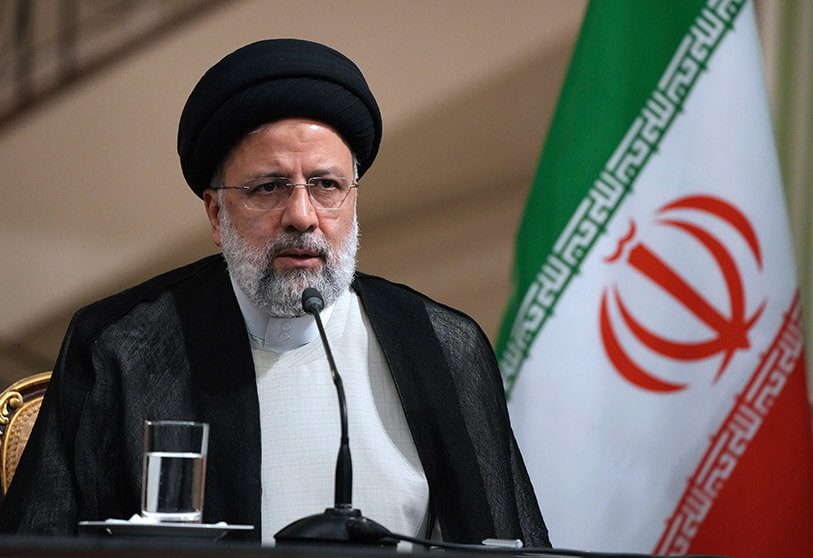The health of Iran’s Supreme Leader, Ayatollah Ali Khamenei, could have deteriorated in recent days. Confidentiality is complete. Institutional channels have not commented on his situation, nor even denied the speculation that is leaking out of the country, but specialized media such as “International Iran” echoed the rumors in the absence of official confirmation. The only certainty is that Khamenei has been suffering from prostate cancer for years, a disease that is relatively treatable even at an advanced stage.
This wouldn’t be the first time his health had been damaged. In 2013, the current octogenarian president of the Persian state underwent surgery to treat his cancerous cancer. That was one of the few official information about his physical condition. Prior to that, in 1981, just two years after the victory of the Iranian Revolution, Khamenei was the target of an attack carried out by the People’s Mojahedin Organization of Iran (Moyāhedin-e jalq, MEK), from which he survived against all odds. . Since then, he had a pronounced disability in his right arm, which was practically paralyzed.
The lack of information unleashed the rumor mill. Any possibility in the organizational scheme of Iranian power will have direct and indirect consequences for the entire region. Also for the rest of the world. The context in which the Islamic Republic finds itself is particularly sensitive, with endless negotiations to reissue the nuclear agreement and an economy beleaguered by Western sanctions. A bitter rivalry with Israel, which is trying to destabilize through its allied militias, also sets the pace for action in the Middle East.
The 83-year-old ayatollah canceled this week’s meeting with the Assembly of Experts, the deliberative body of the Islamic Republic made up of 88 clerics responsible, among other things, for the appointment of the Supreme Leader. Its members, elected by ballot every eight years, must be approved in advance by the Council of Guardians, whose members are appointed directly or indirectly by the head of state. Everything remains in the hands of Khamenei and his closest entourage.
The public website dedicated exclusively to the Supreme Leader Supposed to be available on September 26 Commemorating the martyrdom of Hussein bin Ali bin Abi Talib, the second son of Ali, Muhammad’s son-in-law and Shiite symbol. A day of mourning for the believers in this branch of Islam. At the moment, his help has been confirmed, but suspicions do not subside, among other things, because the rest of the state news agencies (IRNA, Mehr or Fars) have not published information about Khamenei for a long time. He has disappeared.

His last public appearance dates back to September 3rd. In the photos of the event he appears at all times in a surgical mask. However, he did not hold it during the reception of the Russian and Turkish presidents, Vladimir Putin and Recep Tayyip Erdogan, in mid-August, in Tehran for a tripartite summit in the Astana format. It was Ibrahim Raisi, the head of government, who led the tripartite meeting. Khamenei’s role has been sidelined, in the background, which is common on the other hand in this type of appointment.
Succession
It is well known that Khamenei, aware of his precarious state of health, He had long been preparing for his succession at the head of the Islamic Republic. There is no room for improvisation. In this scenario, two figures were identified to take charge: the second of the four sons of the Supreme Leader, Mojtaba Khamenei, and the current president, Ebrahim Raisi. Two heavyweights within the Iranian power scheme. One, Mojtaba, without recognized institutional responsibilities, and the other, chief, with experience at various levels of the state.

Raisi jumped to the front line in June 2021 after winning the presidential election. There were no surprises. The former head of the judiciary, implicated in crimes against humanity committed against political opponents in 1988, took office in August, as planned by the Guardian Council, the body responsible for approving or not approving nominations. This institution arbitrarily excluded the most competitive candidates in the polls to clear the way for Raisi. This move was then interpreted as a clear signal: Khamenei chose his successor.
But in recent months, the character of his son Mojtaba has emerged more strongly. The 53-year-old cleric gained public exposure during the crackdown by security forces after the 2009 presidential election, which resulted in Mahmoud Ahmadinejad’s controversial victory over moderate Mir Hossein Mousavi. Some voices assert that he was responsible for directing the violent reaction of the authorities.
Coming from a religious and ideological background close to the extreme right, Mojtaba is associated with the regime’s most difficult wing. The opposition in exile maintains that Khamenei has delegated responsibilities to him in recent months, and he is also said to have close links with the Revolutionary Guards, an elite branch of the military that functions as a parallel state. Supporting this institution may be crucial to tipping the balance in their favour.

But he suffers from a disability and this despite being a religious man Mojtaba does not yet have the credentials of AyatollahIt is necessary to become the supreme leader according to the Iranian constitution. At the legal level, he could not take the position.
The transition does not have to be instant. It could be days, weeks, or even months. Everything will depend, yes, on the Assembly of Experts, the body of 88 clerics who in turn follow Ali Khamenei. So far, the Islamic Republic has had two presidents. First, Ruhula Khomeini, the iconic hero of the revolution who overthrew Shah Reza Pahlavi and consolidated the new regime; Then Ali Khamenei. But his leadership was indisputable. A few months before Khomeini’s death in 1989, all eyes were on Grand Ayatollah Hossein Ali Montazeri, whose candidacy faded amid the machinations of mosques.

“Beeraholic. Friend of animals everywhere. Evil web scholar. Zombie maven.”
